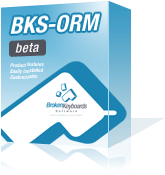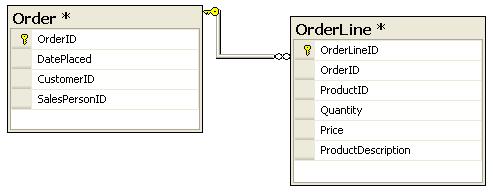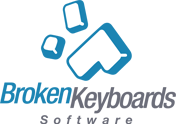Welcome. You are here: Home : Products: BKS-ORM: Our Object Relational Tool of Choice

BKS-ORM: Our Object Relational Tool of Choice
After much deliberation, we have decided to keep this tool for our consulting engagements only.
what is the problem?
In the early stages of development for any enterprise class application, a high percentage of time is spent on pattern-based plumbing code, viz: adding entities that map to database tables and including Create, Read, Update and Delete procedures.
Although these bits of functionality have to be in place, the process of adding them are time-consuming and error-prone.
Furthermore, if best practices change while the project is running, it would typically take too long to fold in the new practices into the old code.
How does this product solve it?
Using this framework, you can create your business bag objects that maps to a database table, see sample below, and then use our server side object to do: create, read ( with various filters ), update and deletes on that object.
You will end up with several 'bag' objects, but there is only one server side component that you need to learn how to use - this simplifies this significantly.
This framework is optimised for .NET Remoting, but can just as easily be used in a simpler architecture.
Here is an example of the canonical Order and OrderLine tables used in most sales entry systems.

The code representation of this starts with the Order object (you'll need to write this):
[PersistorAttTable(
TableName = "Order",
EnableConcurrencyChecking = true,
EnableInitialCreationLog = false,
EnableSoftDeleting = true)]
[Serializable]
public class Order : BagBase
{
private Guid _OrderID;
// flag this prop as the primary key
[PersistorAttPK()]
public Guid OrderID
{
get { return _OrderID; }
set { _OrderID = value; }
}
private DateTime _DatePlaced;
public DateTime DatePlaced
{
get { return _DatePlaced; }
set { _DatePlaced = value; }
}
private Guid _CustomerID;
public Guid CustomerID
{
get { return _CustomerID; }
set { _CustomerID = value; }
}
private Guid _SalesPersonID;
public Guid SalesPersonID
{
get { return _SalesPersonID; }
set { _SalesPersonID = value; }
}
private OrderLine[] _Lines;
// create one-to-many association with the OrderLine object
[PersistorAttSubObject("this.OrderID = that.OrderID")]
public OrderLine[] Lines
{
get { return _Lines; }
set { _Lines = value; }
}
public override bool BaseValidateBag()
{
return true;
}
}
Note the Lines property which has a type of an OrderLine array. This infers that the relationship is a one ( the Order object ) to many ( the OrderLine objects ).
This is the code for the OrderLine object.
[PersistorAttTable(
TableName = "OrderLine",
EnableConcurrencyChecking = true,
EnableInitialCreationLog = false,
EnableSoftDeleting = true)]
[Serializable]
public class OrderLine : BagBase
{
private Guid _OrderLineID;
[PersistorAttPK()]
public Guid OrderLineID
{
get { return _OrderLineID; }
set { _OrderLineID = value; }
}
private Guid _OrderID;
public Guid OrderID
{
get { return _OrderID; }
set { _OrderID = value; }
}
private Guid _ProductID;
public Guid ProductID
{
get { return _ProductID; }
set { _ProductID = value; }
}
private decimal _Price;
public decimal Price
{
get { return _Price; }
set { _Price = value; }
}
private int _Quantity;
public int Quantity
{
get { return _Quantity; }
set { _Quantity = value; }
}
private string _ProductDescription;
public string ProductDescription
{
get { return _ProductDescription; }
set { _ProductDescription = value; }
}
public override bool BaseValidateBag()
{
return true;
}
}
This is the type of functionality that most ORM frameworks provide, but BKS-ORM provides several more:
1. Concurrency checking - to prevent data collisions. Essential for large systems.
2. Soft deleting - marks a row as deleted and prevents this row from being returned again with normal Fetches.
3. Initial creation Logs - logs the user ( a string value ) that first created this entity and the date/time
4. Adding Custom Properties - the bag objects can be used to hold any other business logic you wish. See below:
[PersistorAttIgnore()]
public decimal TotalOrderPrice
{
get
{
decimal total = 0;
if (Lines != null)
{
for (int i = 0; i < Lines.Length; i++)
{
total += Lines[i].Price * Lines[i].Quantity;
}
}
return total;
}
}
In this example, we have added a new property ( or method, etc...) to the Order object that will calculate the total price per order. We have flagged this property with the PersistorAttIgnore attribute. The BKS-ORM framework will ignore this.
An example usage follows:
Bags.IBagPersistor oBag = Remoting.CreateObject();
Bags.Order oOrder = oBag.FetchSingleBagBaseForPK(gOrderID);
decimal orderTotal = oOrder.TotalOrderPrice;
string firstProduct = oOrder.Lines[0].ProductDescription;
The Remoting.CreateObject call wraps some remoting specific functions. If remoting is not needed a new operator could be used.
